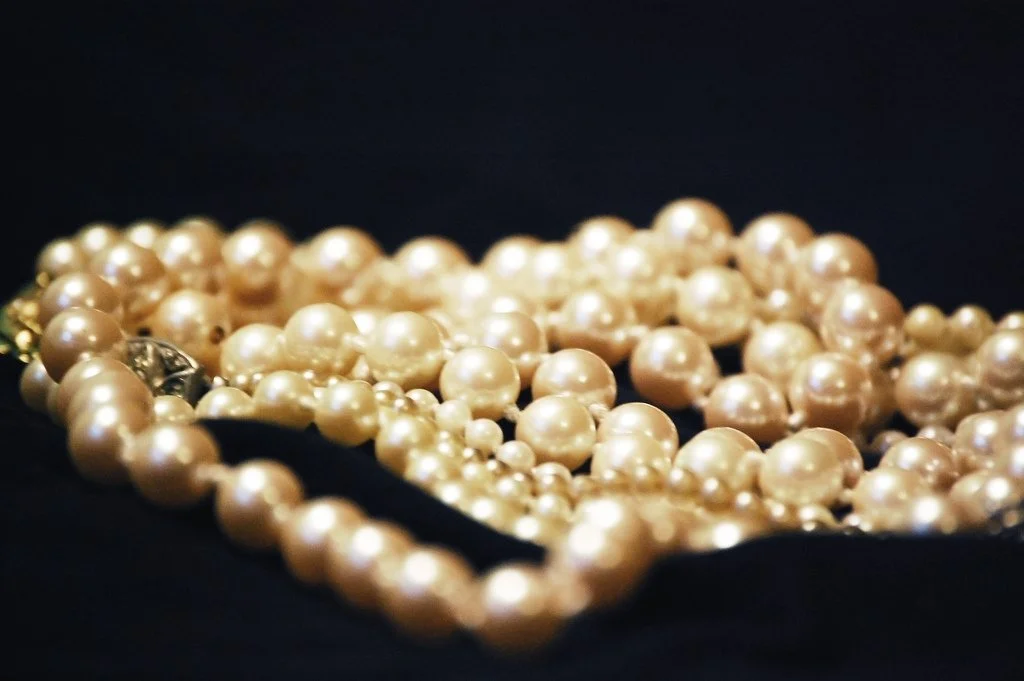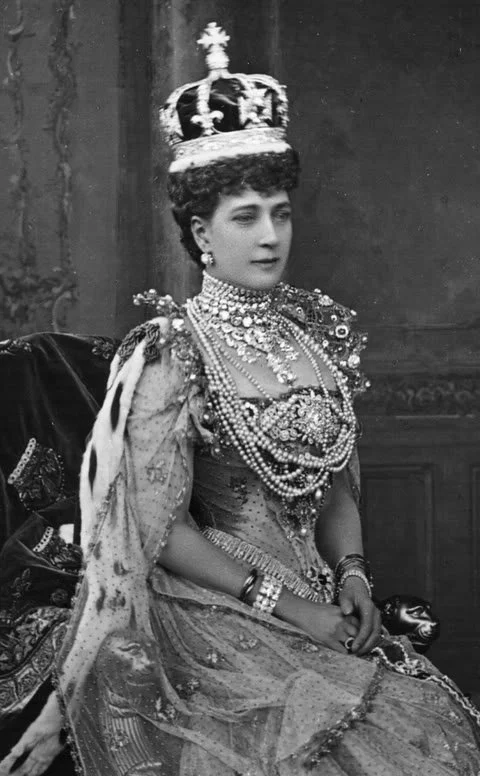PEARLS (Part 1)
Pearls have held us in fascination since the earliest records of history. Our mental image of various kings and queens is often associated with blazing diamonds or sapphires the size of 2p pieces. What we forget is that for centuries monarchs all over the world valued pearls above all other stones. They are the most understated and elegant of gems. It wasn't until Mikimoto in Japan made pearl farming commercially viable in the 1920s that they became relatively affordable; before that, they were beyond doubt the priciest of jewels.
Unlike crystal based gems, they require no re-cutting and polishing to fulfil aesthetic criteria. Their status is epitomised by the anecdote of the famous Cartier brothers buying their prestigious 5th Avenue store site in New York for just $100 in cash and a strand of natural pearls appraised at over $1 million.The reason for their value lay in the intensity of labour required to farm them: hundreds, sometimes thousands of oysters needed to be gathered and killed before a single natural pearl was found. The rarest are perfectly round, with lack of surface flaw and symmetry being particularly important, so it is understandable why collectors prized ropes of perfectly matched pearls so highly. It is ironic that pearls, regarded a symbol of beauty and perfection, should start off as an irritation to an animal. Put very simply, a foreign body enters a mollusc which it cannot dislodge. To ease the discomfort this causes it, the mollusc secretes nacre, or mother of pearl in order to ease the irritation. As the nacre secretion builds up the pearl is formed and so, if you drill into a natural pearl you will always come across the nucleus, the irritant that caused the pearl to form in the first place.
Pearls are also more ephemeral and ethereal than diamonds or sapphires- a diamond can be re-cut and re-polished, withstand all sorts of harsh treatment. Being formed of organic material, pearls are far more susceptible to damage and putting scent on or applying hairspray while wearing them can cause irreparable damage to the lustre.
Monarchs all over the world utilised pearls as an enhancement to their status, using them not only as jewellery but wearing ropes of them yards long to embellish themselves and their clothing. The most famous of these monarchs of course was Queen Elizabeth I, yet even by her lavish standards some of her dresses were decorated with fakes. No matter; what was important was the visual impact, particularly in an age where Royal exposure largely relied on portraiture. Known as the Virgin Queen, her exuberant use of pearls was also symbolic as they represented purity, and her tomb effigy in Westminster Abbey shows even her shoes were decorated with considerably sized pearls. Her fabulous collection was probably dispersed during the Interregnum; however, four excellent quality drop shape pearls survive, mounted in the Imperial State Crown- stones she bought from her cousin, Mary Queen of Scots.
Queen Elizabeth I in the famous Rainbow Portrait at Hatfield House. Note the diamond and pearl ornament around her neck
To reaffirm the importance given to pearls by our not so distant ancestors, it is worth noting the vicious dispute Queen Victoria had with her Hanoverian cousins on her accession to the throne. Under Salic Law (whereby a female cannot inherit the throne) she inherited the British throne but could not accede the Hanoverian one. The most monumental quarrel broke out broke out over the Hanoverian family jewellery: in theory she had to hand over the jewellery to the next Hanoverian male heir, yet the quandary was that a large part of the collection had effectively been bought with English money. Victoria eventually settled a couple of decades later, relinquishing many important pieces of jewellery but most importantly to her, not the pearls. These were then distilled into two simple rows of pearls and worn by one Princess Elizabeth as a necklace on her wedding day to Phillip Mountbatten.
The way Queen Victoria's daughter-in-law, Queen Alexandra, used pearls is also a good analogy for the pearl itself. She made chokers highly fashionable in order to hide a physical defect, a scar left on her neck by a childhood operation and they became an iconic accessory of her style and the Edwardian era. Thus, like the pearl itself her use of them was born to mask an imperfection.
It is probably quite right that nobody fights wars over pearls any more, probably for the best that cultured pearls have made the almost semi-divine gem affordable to everyone. What is irrefutable, however, is that as far as jewels go they are the most miraculously humble gems, complete in their perfection from creation.
Queen Victoria's daughter-in-law, Queen Alexandra, who made chokers highly fashionable



